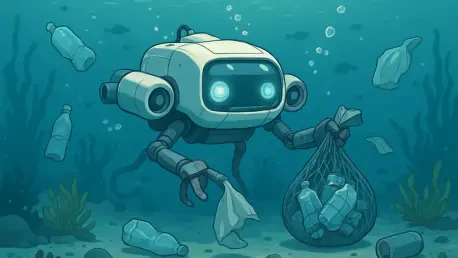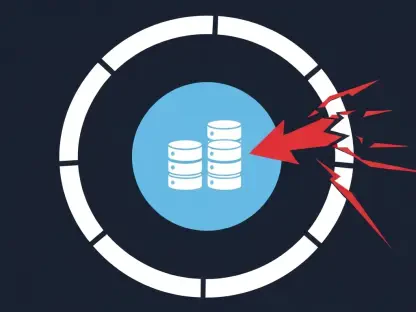What lies hidden beneath the ocean’s surface is a crisis of staggering proportions—millions of tons of marine litter, from discarded e-scooters to tangled fishing nets, suffocating seabeds and threatening aquatic life in harbors and ports worldwide. This invisible menace grows unchecked, often out of reach for most traditional cleanup methods, but a groundbreaking solution has emerged from the depths of innovation: autonomous robots designed to dive where humans cannot, retrieving debris with precision and efficiency. This story uncovers a technological revolution led by researchers at the Technical University of Munich (TUM), offering a potential lifeline for the planet’s waterways.
The Hidden Plague of Underwater Trash
The scale of marine pollution extends far beyond what washes ashore. Beneath the waves, harbors and coastal zones are littered with debris—think tires, bicycles, and ghost nets—that disrupt ecosystems and endanger marine species. According to estimates, over 8 million tons of plastic alone enter the oceans annually, much of it sinking to the bottom, out of sight but not out of impact. This underwater graveyard poses a unique challenge, as manual cleanup by divers is often hazardous and limited to shallow depths, leaving vast areas untouched.
Traditional methods fall short when faced with murky, deep waters where visibility is near zero and risks to human life are high. The financial burden of such operations is immense, often deterring consistent efforts by coastal authorities. As environmental pressures mount, the urgency to find scalable, safe alternatives has intensified, pushing technology to the forefront of this battle against marine litter.
A Robotic Answer to an Oceanic Crisis
At the heart of this fight is TUM’s SeaClear project, an EU-funded initiative that has pioneered a system of autonomous underwater robots to tackle marine debris. Unlike singular machines, this setup operates as a coordinated team: an unmanned service boat serves as the control hub, a compact search robot scans the ocean floor for trash, and a robust diving robot retrieves the identified items. Tested in real-world conditions at a major European port, this system represents a significant leap in addressing a problem long deemed insurmountable.
The technology relies on artificial intelligence (AI), trained with over 7,000 images to recognize objects even in low-visibility environments using cameras and sonar. The diving robot, equipped with a four-fingered gripper, can lift up to 250 kilograms while adjusting its force to avoid damaging fragile items. From mapping the seabed with ultrasonic waves to hoisting debris to a floating dinghy via a winch, every element is engineered for precision, showcasing how robotics can transform environmental challenges into solvable puzzles.
Voices from the Vanguard of Innovation
Dr. Stefan Sosnowski, a leading researcher on the SeaClear project, highlights the game-changing nature of this technology. “Beyond 16 meters of depth, sending divers becomes both impractical and expensive,” he explains. “This autonomous system slashes costs and removes the danger to human life, paving the way for broader cleanup initiatives.” His perspective underscores a critical shift in how marine conservation can be approached, prioritizing safety alongside effectiveness.
Feedback from field tests reinforces this optimism. Operators who witnessed the robots in action noted their ability to navigate treacherous underwater terrain and retrieve varied debris, from heavy metal scraps to delicate plastics. Environmental experts are increasingly aligning with this view, recognizing automation as a vital tool to scale efforts against marine pollution. Such endorsements from those directly involved lend credibility to the notion that robotic solutions could redefine ocean stewardship.
Blueprint for a Cleaner Ocean
Deploying autonomous robots like those from the SeaClear project requires strategic planning to maximize their impact. High-traffic areas such as busy ports or ecologically vulnerable zones should be prioritized, where litter accumulation poses the greatest threat. Integrating these systems with existing marine operations—using the service boat as a central coordinator for multiple robots—can streamline efforts and ensure comprehensive coverage of affected regions.
Equally important is building local capacity to support this technology. Training teams to oversee and maintain the robots, while continuously updating the AI with new underwater data, enhances detection accuracy over time. Focusing on depths of 16 meters or greater also offers significant cost savings compared to human-led dives, making this approach not just innovative but economically viable for widespread adoption by authorities and organizations committed to marine health.
Scaling the Solution for Global Impact
Beyond individual deployments, the broader potential of autonomous underwater robots lies in their adaptability to diverse environments. Customizing the AI to recognize region-specific debris—whether it’s fishing gear in the North Atlantic or consumer waste in Southeast Asian waters—could amplify effectiveness across global hotspots. Collaboration between governments, environmental groups, and tech developers is essential to refine and scale these systems, ensuring they meet varying needs and conditions.
Funding and policy support will play a critical role in this expansion. Incentives for ports to adopt robotic cleanup technologies, paired with international agreements to share data and best practices, could accelerate progress. As the technology evolves, integrating real-time monitoring to track litter accumulation trends might further optimize deployment strategies, turning a reactive solution into a proactive defense against marine pollution.
Reflecting on a Milestone in Marine Conservation
Looking back, the development of TUM’s SeaClear project marked a turning point in the struggle against underwater marine litter. The successful trials and innovative design of the autonomous robots demonstrated that technology could reach where human hands could not, offering a safer, more efficient path to cleaner oceans. Each retrieved piece of debris stood as a testament to what was possible when science and determination converged.
Moving forward, the focus must shift to widespread implementation, with stakeholders urged to invest in pilot programs and cross-border partnerships to tackle this global issue. Refining AI capabilities and expanding operational reach to deeper, more remote waters should remain priorities. The journey to reclaim the oceans gained momentum with these robotic pioneers, and sustained effort holds the promise of a future where marine ecosystems thrive, unburdened by the weight of human waste.









